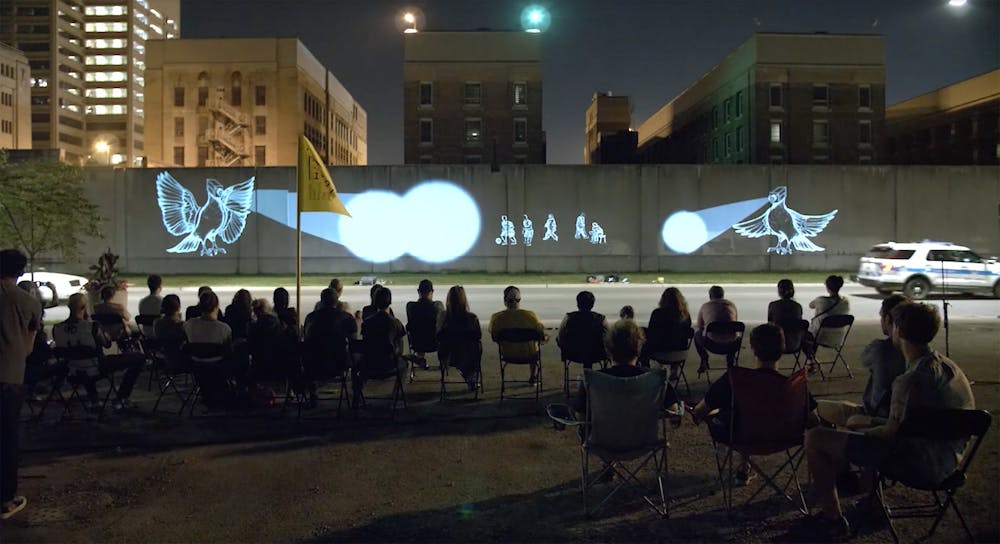She took portraits of these women and put them on black paper and covered it with black ink. Ngô said this let the figures emerge from the paper and haunt the space they occupied.
In what she referred to as the anchor of the exhibition, Ngô excerpted French Indochina concubine novels and printed them with thermal chromatic ink, only revealing the words when they were touched.
Anna Martine Whitehead
Whitehead is a performer whose art doesn’t use a passive audience. Instead, they said it's used to activate and engage participants.
Whitehead’s ongoing project “Future Supper” works with primarily white institutions to host dinner events for people of color. The attendees can choose to share their food with anyone, but the emphasis is that it’s their choice.
“It's essentially an opportunity to practice what we sometimes in school settings called brave space,” Whitehead said. “This is brave space, in particular, in the context of Black and brown joy.”
The other project Whitehead discussed is a box that they built that appears to be a prison shrouded in sequins, but transforms into a ball gown when walked through. They said the inspiration of the piece was the prison-like confinement enslaved people faced and how they survived it.
“This got me to thinking about how, in general, one survives a precarious on freedom, like this, or how one makes a space that looks like a prison cell makes it feel like something other than slavery,” Whitehead said.
Maria Gaspar
Gaspar’s art creates a deeper conversation centered around incarceration and the racial inequality involved. She said her art doesn’t cover up the ugliness, but instead brings it to light.
“I know that my project isn't ending mass incarceration, but I think that it is a kind of rehearsal for what could it look like if we unbuilt prisons,” Gaspar said. “What does abolition look like?”
Her inspiration came from the huge jail in her predominately Latinx and Black neighborhood growing up.
To get the day's news and headlines in your inbox each morning, sign up for our email newsletters.
Gaspar created a video project centered around showing the inside of the jail and its effect on those incarcerated. She said she filmed men incarcerated at the jail sharing their stories, with an emphasis on the kinship between them.
“It's a sense of trust and belonging that you can create in a place that has been meant to make you feel like you don't belong, and a system that perpetuates that," she said.
The showing was projected onto the wall meant to hide the jail from the public. She said by throwing light and sound at the jail she hoped to directly oppose the darkness and rigidness the jail imposed over the community.
“We decided that what we would focus on is personifying the interior of the jail and think about the wall as a kind of amplification device essentially asking, ‘If the wall could speak, what would it say?’,” she said.
This was the first visiting lecture of the semester and the Department of Art and Art History plan to host more throughout the year. Enriched in history, the Art Department’s Visiting Artist Series hopes to get master's of fine arts students thinking about how art can be reflected through different mediums.
arts@dailytarheel.com



